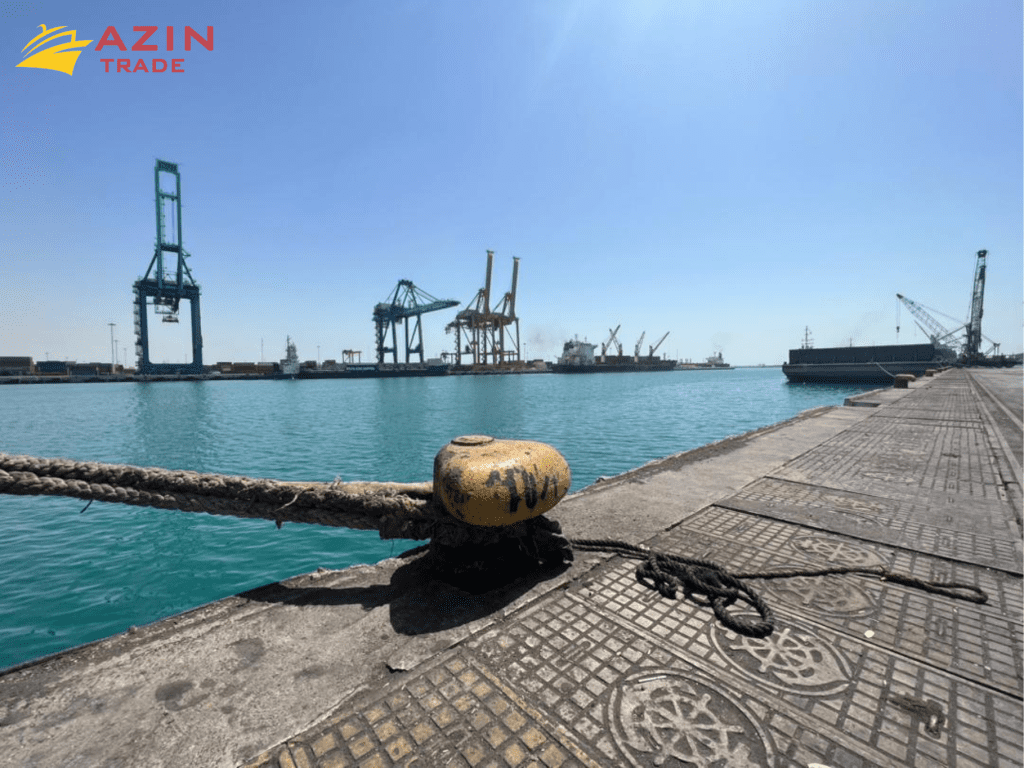
Necessary Documents for Export Consignment by Sea
Exporting goods by sea is a complex process that requires meticulous preparation and adherence to international regulations. Ensuring that all necessary documents are correctly prepared and submitted is crucial for a smooth and successful export operation. This comprehensive guide explores the essential documents required for export consignment by sea, providing detailed explanations of their purposes, contents, and the roles they play in international trade.
Introduction
Export consignment by sea involves a series of logistical steps that connect the exporter to the importer across international borders. The primary goal is to ensure that goods are transported safely, efficiently, and in compliance with international trade regulations. This process necessitates a variety of documents, each serving a specific purpose in the export operation.
Understanding these documents is vital for businesses like Azintrade to navigate the complexities of maritime export and maintain compliance with regulatory requirements. This guide will cover the key documents needed, from commercial and transport documents to regulatory and financial documents, ensuring a thorough understanding of their roles and importance.
Commercial Documents
1. Proforma Invoice
The Proforma Invoice is a preliminary bill of sale sent to the buyer before the goods are shipped. It outlines the terms of the sale, including product descriptions, quantities, prices, and payment terms. This document is crucial for the buyer to secure import licenses and arrange for payment and financing.
2. Commercial Invoice
The Commercial Invoice is the final bill of sale and a critical document for customs clearance. It includes detailed information about the transaction, such as the names and addresses of the buyer and seller, a description of the goods, quantities, unit prices, total value, payment terms, and delivery terms. It serves as a record for both the exporter and importer, as well as for customs authorities to determine duties and taxes.
3. Packing List
The Packing List provides detailed information about the contents of each package or container, including item descriptions, quantities, weights, dimensions, and any special handling instructions. This document helps in the efficient handling and storage of goods during transit and is essential for customs clearance.
4. Certificate of Origin
The Certificate of Origin certifies the country where the goods were manufactured. This document is often required by customs authorities in the importing country to determine tariff rates and ensure compliance with trade agreements. It may be issued by a chamber of commerce or other authorized body.
Transport Documents
1. Bill of Lading
The Bill of Lading (B/L) is a crucial document in maritime shipping, serving three main purposes: it acts as a receipt for the goods shipped, a document of title to the goods, and a contract of carriage between the shipper and the carrier. There are two main types of Bills of Lading: straight (non-negotiable) and order (negotiable). The B/L includes information about the shipper, consignee, vessel, port of loading, port of discharge, and the goods being transported.
2. Sea Waybill
A Sea Waybill is a transport document that, unlike the Bill of Lading, is non-negotiable and does not serve as a document of title. It facilitates the quick release of goods at the destination without the need for the original document to be presented. The Sea Waybill contains similar information to the Bill of Lading but is used when the transfer of title is not necessary.
3. Shipping Instructions
Shipping Instructions provide detailed information to the shipping line or freight forwarder regarding the handling and transportation of the consignment. These instructions include the shipper’s and consignee’s details, description of goods, packaging, weight, dimensions, and any special requirements for handling or storage.
Regulatory Documents
1. Export License
An Export License is a government-issued document authorizing the export of specific goods to a particular destination. This license ensures compliance with export control regulations and may be required for goods that have strategic, military, or dual-use applications. The necessity of an export license depends on the nature of the goods and the destination country.
2. Import License
An Import License is required by the importing country and grants permission to bring the goods into the country. This document ensures that the importer complies with local regulations and may be necessary for certain controlled goods.
3. Customs Declaration
The Customs Declaration is a form submitted to customs authorities detailing the goods being imported or exported. This document includes information about the exporter, importer, goods, value, and the applicable duties and taxes. Accurate completion of the customs declaration is crucial for the smooth clearance of goods.
4. Dangerous Goods Declaration
For consignments containing hazardous materials, a Dangerous Goods Declaration is mandatory. This document certifies that the goods have been packaged, labeled, and handled in accordance with international regulations, such as the International Maritime Dangerous Goods (IMDG) Code. It includes details about the nature of the hazardous materials, their classification, and safety measures.
Financial Documents
1. Letter of Credit
A Letter of Credit (L/C) is a financial instrument issued by a bank on behalf of the buyer, guaranteeing payment to the seller upon presentation of specified documents that comply with the terms and conditions of the L/C. It mitigates the risk of non-payment for the exporter and ensures that the buyer receives the goods as agreed.
2. Bill of Exchange
A Bill of Exchange is a written order from the seller to the buyer, or their bank, to pay a specified amount at a predetermined date. This document can be used to obtain financing from a bank or to settle the transaction.
3. Insurance Certificate
An Insurance Certificate provides proof that the consignment is covered by insurance during transit. This document includes details about the insurance coverage, such as the type of coverage, value of goods, and the duration of the policy. It protects against potential losses or damages that may occur during shipping.
Additional Supporting Documents
1. Inspection Certificate
An Inspection Certificate certifies that the goods have been inspected and meet the specified standards and quality requirements. This document may be issued by an independent inspection agency and is often required for certain products or destinations to ensure compliance with regulatory standards.
2. Phytosanitary Certificate
A Phytosanitary Certificate is required for the export of plants and plant products. Issued by the relevant agricultural authority, it certifies that the goods are free from pests and diseases and comply with the phytosanitary regulations of the importing country.
3. Health Certificate
For the export of food products, a Health Certificate may be required. This document certifies that the goods meet the health and safety standards of the importing country and have been produced, processed, and handled in accordance with the relevant regulations.
4. Consular Invoice
A Consular Invoice is a document certified by the consulate of the importing country, verifying the value, quantity, and nature of the goods being shipped. This document is used to ensure accurate customs valuation and prevent fraud.
Conclusion
In conclusion, the successful export of goods by sea relies heavily on the accurate preparation and submission of various documents. Each document serves a specific purpose, ensuring compliance with international trade regulations, facilitating customs clearance, and protecting the interests of both the exporter and importer. Understanding and adhering to these requirements is crucial for businesses like Azintrade to navigate the complexities of maritime export and achieve smooth and efficient operations.
By meticulously preparing and managing these documents, exporters can minimize delays, avoid penalties, and build trust with their international partners. As the global trade landscape continues to evolve, staying informed about regulatory changes and best practices in document preparation will remain essential for maintaining competitiveness and achieving long-term success in the export market.




